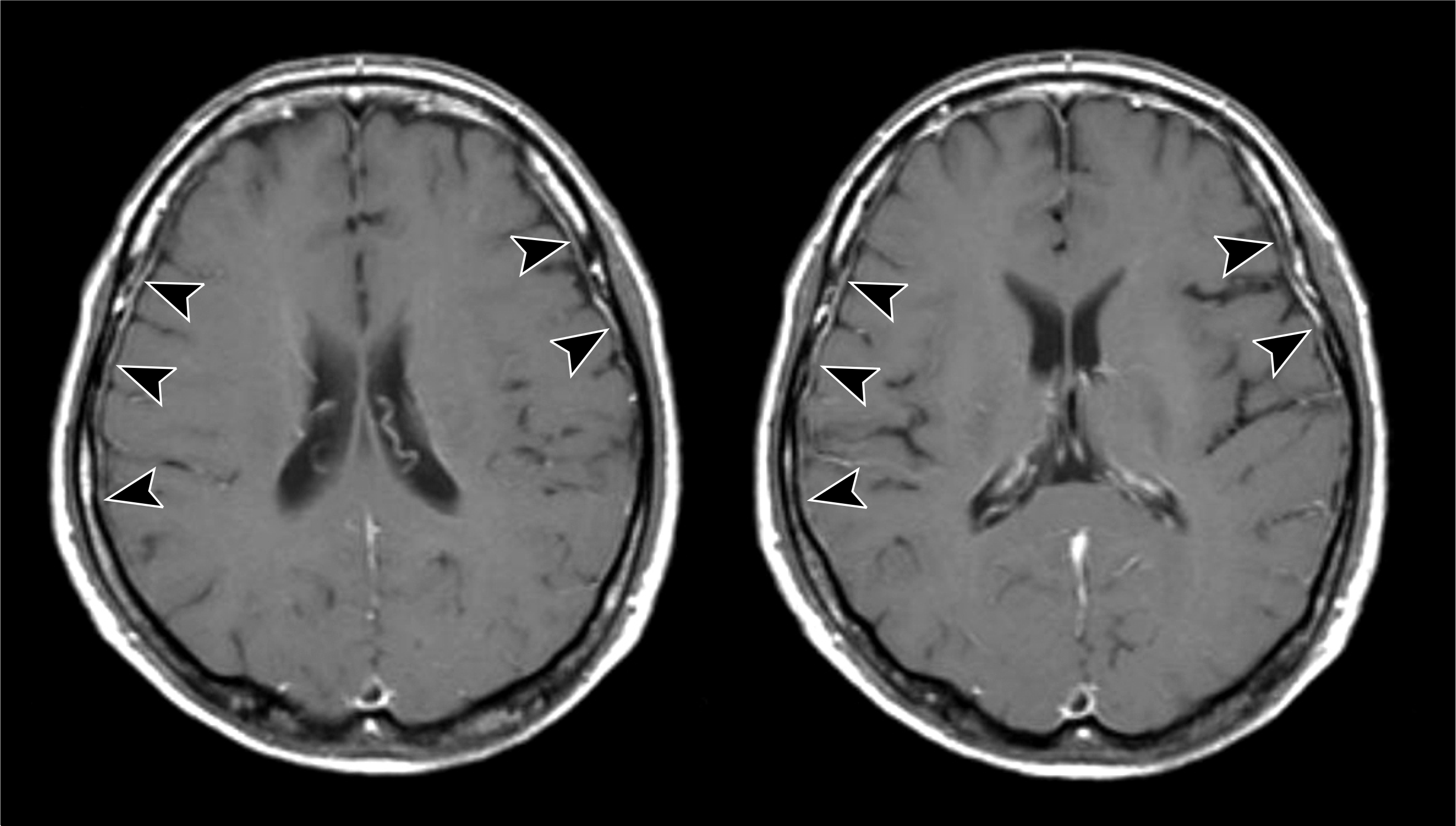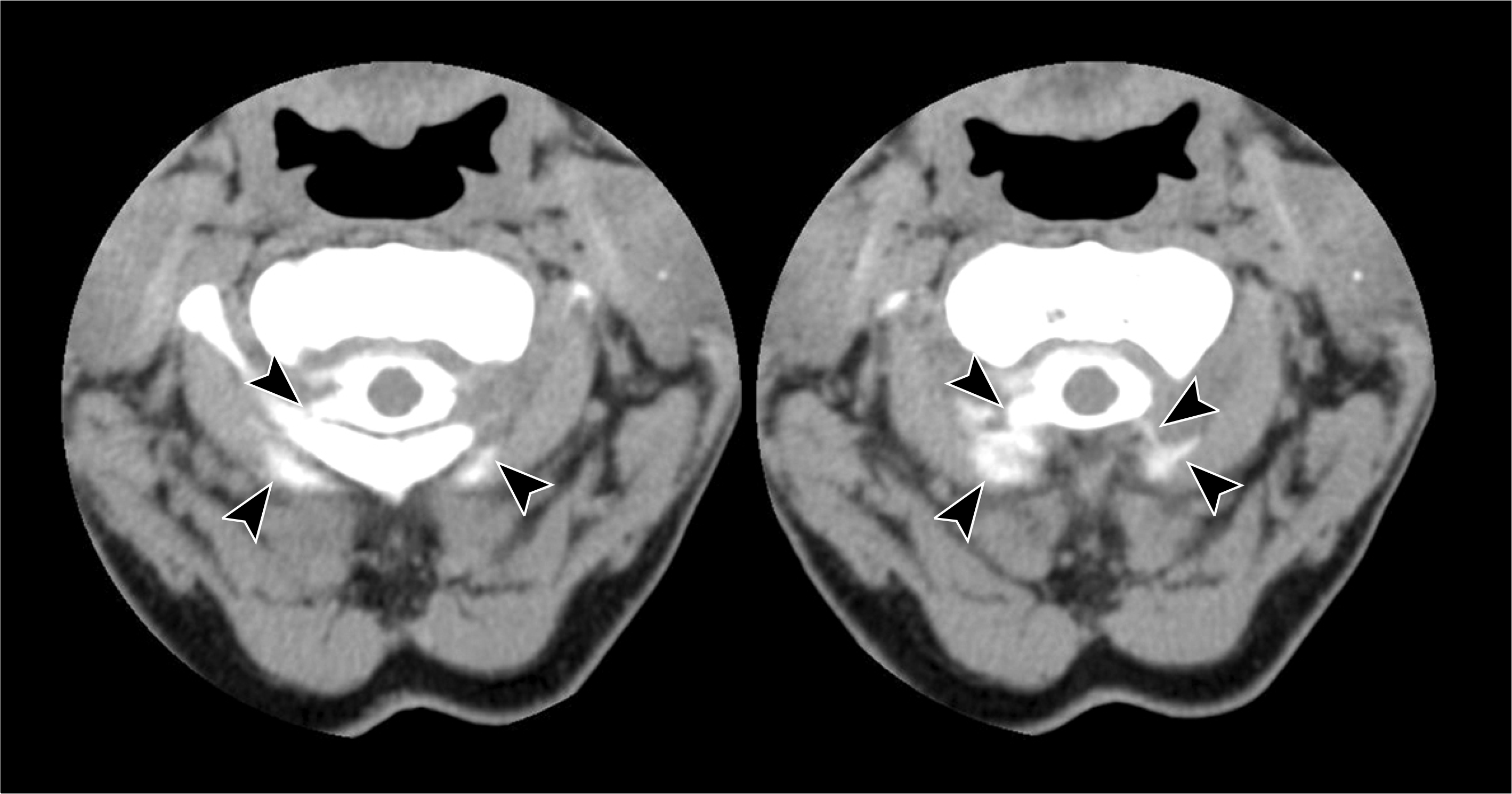Abstract
Headaches are not only one of the 19 different neuropsychiatric syndromes in SLE but also the most common chief complaint of patients with neuropsychiatric lupus. Approximately 50% of patients with SLE are presumed to have neuropsychiatric phenomena during their illness. There're no specific serological, radiological or histological biomarkers to confirm the clinical diagnosis of neuropsychiatric lupus. Therefore, physicians tend to try controlling lupus activity especially when the origins of the headache in patients with lupus are difficult to define. However, neuropsychiatric lupus can only be diagnosed after excluding other causes which is the point. A 47-year-old woman with lupus presented to the emergency department with the sudden onset of postural headache with nausea and vomiting. Through CSF tapping and CT myelography, intracranial hypotension with spontaneous CSF leakage was revealed. Her symptoms promptly improved after therapy using an epidural blood patch. Intracranial hypotension with spontaneous CSF leakage is rare disease, and it has never been reported in patients with SLE before. This case emphasizes the importance of finding out the origin of a headache in patients with lupus.
Go to : 
References
1. Schievink WI, Morreale VM, Atkinson JL, Meyer FB, Piepgras DG, Ebersold MJ. Surgical treatment of spontaneous spinal cerebrospinal fluid leaks. J Neurosurg. 1998; 88:243–6.

2. Schievink WI, Roiter V. Epidemiology of cervical artery dissection. Front Neurol Neurosci. 2005; 20:12–5.

3. Schievink WI. Spontaneous spinal cerebrospinal fluid leaks and intracranial hypotension. JAMA. 2006; 295:2286–96.

4. Mokri B. Spontaneous cerebrospinal fluid leaks: from intracranial hypotension to cerebrospinal fluid hypovolemia-evolution of a concept. Mayo Clin Proc. 1999; 74:1113–23.

5. Headache classification subcommittee of the international headache society. The international classification of headache disorders: 2nd ed. Cephalalgia. 2004; 24(Suppl 1):1–160.
6. Hebra F, Kaposi M. On diseases of the skin, including exanthema. 1–247. London, New Sydenham Society,. 1875.
7. ACR Ad Hoc Committee on Neuropsychiatric Lupus. The American college of rheumatology nomenclature and case definitions for neuropsychiatric lupus syndromes. Arthritis Rheum. 1999; 42:599–608.
8. Joseph FG, Lammie GA, Scolding NJ. CNS lupus: a study of 41 patients. Neurology. 2007; 69:644–54.

9. Sanna G, Bertolaccini ML, Cuadrado MJ, Laing H, Khamashta MA, Mathieu A, et al. Neuropsychiatric manifestations in systemic lupus erythematosus: prevalence and association with antiphospholipid antibodies. J Rheumatol. 2003; 30:985–92.
10. Siamopoulou-Mavridou A, Mavridis AK, Dimou G, Drosos AA. Clinical and serological spectrum of systemic lupus erythematosus in Greek children. Clin Rheumatol. 1991; 10:264–8.

11. Loh WF, Hussain IM, Soffiah A, Lim YN. Neurological manifestations of children with systemic lupus erythematosus. Med J Malaysia. 2000; 55:459–63.
12. Steinlin MI, Blaser SI, Gilday DL, Eddy AA, Logan WJ, Laxer RM, et al. Neurologic manifestations of pediatric systemic lupus erythematosus. Pediatr Neurol. 1995; 13:191–7.

13. Amit M, Molad Y, Levy O, Wysenbeek AJ. Headache in systemic lupus erythematosus and its relation to other disease manifestations. Clin Exp Rheumatol. 1999; 17:467–70.
Go to : 




 PDF
PDF ePub
ePub Citation
Citation Print
Print




 XML Download
XML Download